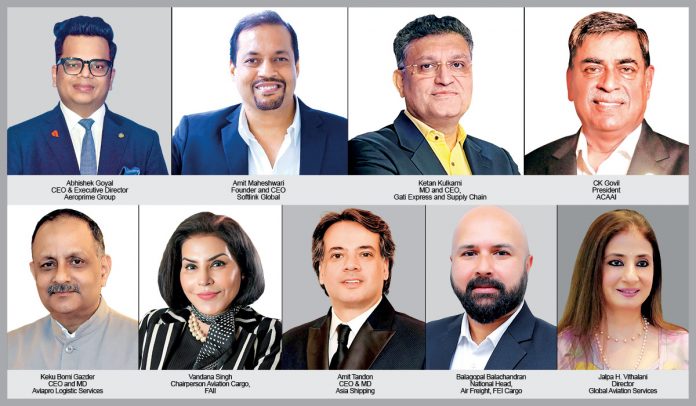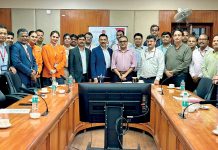PM Gati Shakti Master Plan aims at improving India’s overall logistics performance. Despite progress, PMGS faces constraints, such as inter-ministerial coordination gaps, land acquisition, environmental clearances, limited integration with state-level logistics plans, slow digital adoption and inconsistent mapping across departments. Addressing these is crucial to realising PMGS’ full potential in transforming India’s logistics and trade ecosystem.
Ritika Arora Bhola
To make India a global powerhouse hub of logistics, Prime Minister Narendra Modi launched PM Gati Shakti National Master Plan in 2021, focusing on developing world-class infrastructure, seamless connectivity and technology-driven solutions. The initiative was aimed at integrating multimodal transportation and improving transportation by air, sea, road, rail to facilitate ease of doing business (EoDB) in the country.
In the past few years, India has witnessed tremendous developments under this master plan, which enhanced trade competitiveness and reduced delays and costs.
According to reports, the logistics sector is experiencing robust growth with a projected CAGR from 5.3 per cent to 9.69 per cent between 2025 and 2034, depending on the specific market or region. This growth is fuelled by expansion of e-commerce, increased global trade and advancements in technology under PMGS. The initiative has catalysed infrastructure developments across India, aiming to enhance multimodal connectivity and streamline logistics.
PMGS impact
PMGS has enhanced multimodal connectivity in a big way. The Western Dedicated Freight Corridor (WDFC) links ports in Gujarat to the north via high-speed freight trains, reducing road congestion. It has enabled faster road construction in rural and border areas and supports industrial corridors, such as Delhi-Mumbai Industrial Corridor (DMIC) and Amritsar-Kolkata Industrial Corridor (AKIC). Northeast India saw enhanced road, rail, air connect under PMGS, linking remote towns such as Ziro in Arunachal Pradesh to broader economic networks. It has boosted last-mile road and rail links to ports, such as Paradip, JNPT and Chennai Port, and enhanced air cargo infrastructure in tier II and
III cities to support exports and e-commerce.
For instance, Jewar International Airport (Gautam Buddha Nagar district, UP) is being integrated into highway and rail networks through PMGS. Increased investments in logistics parks, cargo terminals, cold chains and growth of drone-based logistics in remote and disaster-prone regions are also being recognised.
Bottlenecks
Though industry leaders have embraced PMGS and benefitted under the scheme, it has highlighted a few concerns, which require attention. PM Gati Shakti seeks integration of 30 ministries and departments, which is complex and results in delays at bureaucratic levels. On-time project execution is another challenge, which in India with a fragmented market structure depends on state-level approvals, land acquisition, environmental clearances and digital planning. It delays on the ground execution in many regions, especially in hilly, tribal, or conflict-prone areas. PMGS relies on accurate GIS and spatial data thereby reducing the effectiveness of centralised planning and
real-time data tracking. There is shortage of skilled manpower or trained personnel to use the platform effectively. PMGS promotes PPP model, but private players are still hesitant on investing in remote areas.
Viksit Bharat 2047
Viksit Bharat 2047, a vision supporting enhanced trade, economic growth and global competitiveness, is not a far-fetched dream. Sectors supporting this growth include e-commerce, pharma, electronics and automotives. By 2047, a techno-driven logistics ecosystem with reduced logistics costs from to 8 to 10 per cent of GDP, a hub-and-spoke model for air cargo with global link, seamless integration with global supply chains and digitally enabled logistics is undertaken.
Experts speak to how PMGS has hit their businesses and how they look forward to India becoming global logistics powerhouse.
Gati Shakti enhances India’s competitiveness
Abhishek Goyal, CEO & Executive Director Aeroprime Group
PMGS has reduced bottlenecks, enhanced last-mile connectivity and improved transit efficiency for time-sensitive cargo moving on domestic and global routes. It has enabled better coordination between ministries, accelerated infrastructure development, reduced logistics costs and improved delivery timelines and boosted India’s competitiveness. Domestic cargo growth is driven by sectors, such as e-commerce, pharma, electronics and automotive. India’s rising export potential, supported by policy reforms and modernised port and airport infrastructure, continues to strengthen cargo movement.”
Shift in cargo logistics reduces transit times
Amit Maheshwari, Founder and CEO Softlink Global
Gati Shakti has brought about a shift in cargo logistics by integrating infra planning across various transport modes. It has improved multimodal connectivity, streamlined freight corridors, and enabled coordination between ministries—leading to reduced transit times and logistics costs. Pharma, e-commerce and auto components are propelling domestic cargo growth. Exports of engineering goods, chemicals and agri-products are expanding routes. The govt’s push for FTAs and digital infra is enabling forwarders to integrate efficiently into global supply chains.”
Pharma, e-commerce hike end-to-end logistics
Ketan Kulkarni, MD and CEO, Gati Express and Supply Chain
This unified framework is enhancing our domestic connectivity by enabling seamless integration between road, warehousing and multimodal networks. We are strategically expanding our network and leveraging infrastructure synergies in order to provide faster, more reliable domestic cargo movement, especially across emerging tier II and III cities. Sectors such as automotive, e-commerce, pharmaceuticals, consumer electronics, among others are driving this momentum, increasing demand for agile and end-to-end logistics.”
Indian export push expands global cargo routes
CK Govil, President, ACAAI
PMGS has boosted cargo logistics by enhancing multimodal connectivity through integrated planning across road, rail, air and waterways. It has reduced transit time, improved infrastructure synergy, streamlined approvals and made cargo movement more efficient and cost-effective. Growth in domestic and international cargo transport is being driven by sectors e-commerce, pharma, electronics and automotive. The surge in online retail and demand in tier II and III cities, fuels domestic logistics. India’s export push in textiles, agri-products, FTAs and logistics reforms has expanded global cargo routes.”
Rise of online shopping needs faster logistics
Keku Bomi Gazder, CEO and MD, Aviapro Logistic Services
Over 90 GCTs have been developed, with 230 additional terminals approved, facilitating efficient intermodal cargo movement. Rail projects such as Wardha-Ballarshah and Ratlam-Nagda lines are set to increase capacity by 18 MMT annually. The initiative has reduced logistics costs, enhanced supply chain efficiency and supports economic growth by improving road, rail, air, and sea transport modes. E-commerce, manufacturing and pharma are driving growth in domestic and global transport. The rise of online shopping demands faster logistics. Manufacturing exports in electronics etc., boost freight volumes.”
India is slowly improving delivery timelines
Vandana Singh, Chairperson Aviation Cargo, FAII
Notably, 48 GCTs have already become operational, facilitating faster cargo movement and reducing turnaround times (TATs). It has helped eliminate bottlenecks through improved last-mile connectivity, enabling better access to ports and industrial hubs. Through initiatives, such as ULIP, PMGS framework has brought about transparency and real-time visibility in cargo movement. By aligning infrastructure development with cargo demand, the country is reducing logistics costs, improving delivery timelines and positioning itself as a competitive player in international trade networks.”
Infra development speeds up cargo movement
Amit Tandon, CEO & MD, Asia Shipping
PMGS represents a transformative advancement in India’s logistics infra, unifying cargo transportation by road, rail, air, sea and inland waterways into a seamlessly integrated, digitally enabled framework. This holistic approach has reduced bottlenecks, improved freight predictability and fostered enhanced multimodal synergy. Coordinated infra development across ministries accelerated cargo movement, reduces costs and established India as a globally competitive logistics hub. E-commerce, pharma, agri-exports and renewable energy stand out as catalysts of cargo transport.”
PMGS: Logistics costs decrease to 11.5%
Balagopal Balachandran, National Head, Air Freight, FEI Cargo
Digital integration through ULIP is gaining momentum with 930 private sector participants and 30 government systems onboarded, enabling seamless cargo tracking and document processing. PMGS impact is visible, logistics costs decreased from 13 to 14 per cent of GDP to 11.5 per cent in FY24, with more targeted by FY30. It is unlocking PPPs for cargo terminals, warehouses and cold-chain infrastructure, accelerating sectoral growth. India’s cargo landscape is witnessing growth. E-commerce, medicines, electronics, agri-products etc., are leading the surge.”
Results in improved first & last-mile delivery
Jalpa H. Vithalani, Director, Global Aviation Services
For logistics players, this has translated into improved TATs at terminals, enhanced first-mile and last-mile connectivity, and an ability to plan routes efficiently. It is facilitating the development of integrated logistics parks and multimodal transport hubs that reduce bottlenecks and bring predictability to cargo ops. PMGS is not just infra-focused, it is creating a transparent and responsive logistics ecosystem aligned with India’s goal of reducing logistics costs and enhancing competitiveness. Growth in cargo is being led by e-commerce, pharma, and perishables, among others.”















